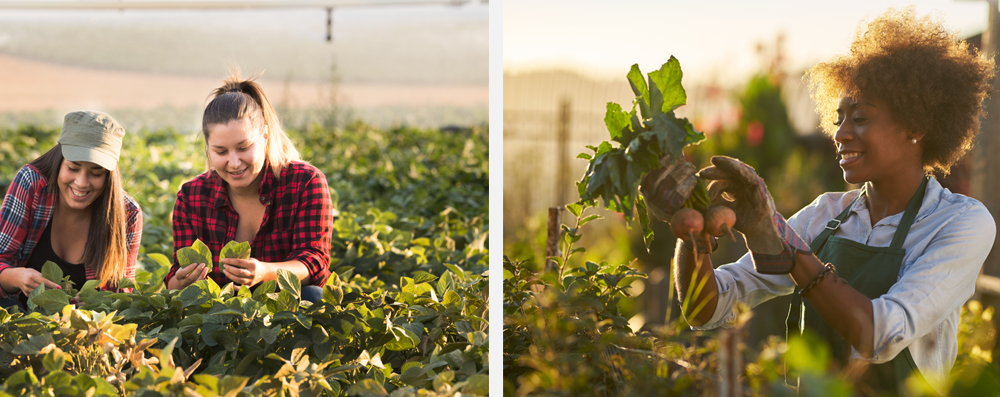One of the latest trends in North American gardening is Container Gardening. The trend is to use tropical and sub-tropical plants in the garden to create interest. Often a featured plant is sunk into the soil to act as a strong visual focus.
Such a plant may be used to cover an unsightly feature or draw the eye to a feature such as a door, water feature, or path. They can also be used to soften a large bare wall.

Brugmansia in a white container blocks out the view.
A word of caution: the placing of these strong focal points closer to the sitting or viewing area will visually foreshorten the garden.
Container Selection
The container should be decorative and of a compatible design with the rest of the area. For example: Do not put modern plastic containers in an oriental themed garden. A note even broke containers can be useful. The container should be durable and winter weather proof unless you plan on bringing them into a frost-free area. Some containers can be stored outside emptied of soil mix and turned upside down to prevent the moisture from accumulating, freezing and cracking the container. The containers should have adequate drainage to prevent water logging by over watering or heavy rainfalls. The drain holes should be free from blockage. This is best achieved by using ceramic, terracotta clay feet, or simply some flat stones or small pieces of wood. Often containers placed on any surface will trap moisture, causing problems with the break down of that surface and provide a perfect home for insect pests such as Chinch Bugs and Slugs. There is also another consideration a container should be heavy and large enough to stop the plant from toppling in the wind as the plant becomes top heavy. This may also be achieved by using soil mixes containing soil. The colour of the container is also a consideration because a dark coloured container will absorb more heat and speed up the plants development and water demand. If either conditions fall outside of the plants ability to cope then the plant will suffer.

Broken urn container.
Hot colours for a hot spot: Sedum in a container.
The Soil Less Mixture
The Growing medium for most plant material should be a soil less mixture. These mixtures are lightweight because they usually contain perlite, vermiculite and peat moss. These mixtures have a tendency to dry out to quickly. To prevent this, the manufactures add moisture retention polymers to the mixture. You should know weather or not these polymers have been added because it will affect the amount and frequency of your watering. Efflorescence may develop on the outside or the containers like this terracotta patio bell pot. While I have heard of many different concoctions to take it off, some of them quite caustic, I use a fine sandpaper carefully.

Hot pink is a real eye-stopper. Petunia Trailblazer in a container.
Canna Lily with Cherry Pie.
Water Delivery
While the most common delivery system for the container garden is still the hose and water wand. One improvement to this old delivery system is the Irrigator nozzle. This nozzle applies the water out of its sides preventing the water from washing the soil across the container and out the other side. This is particularly useful when watering hanging baskets.

Water wand.
For the serious container gardener then the best water delivery system is a drip irrigation system. This system is based on the same systems used by professional container growers. This water delivery system applies a small amount of water continually to each container. You do not have to run the system continually but turn it off when adequate moisture levels are achieved, or cool weather and rain reduce the plants moisture demand.

Drip irrigation kit.
Fertilizer
Water-soluble fertilizers are the most popular fertilizers used in container growing with 20-20-20 or 15-30-15 being the most common types used. These are fine for the organized gardener or the gardener with lots of time. The fastest growing fertilizer for the busy homeowner are the once a season fertilizers. This are mixed in the soil less mixture at planting time or carefully worked into the surface after planting.

Smartcote Annual Flower Food.
Plants Suggestions for Container Gardening
- Abutilon
- Agapanthus
- Annual Herbs
- Aucuba
- Bird of Paradise
- Bougainvillea
- Callistemon
- Carissa
- Caryopteris X Clandonensis
- Century Plant
- Citrus
- Cordyline Draco
- Crape Myrtle
- Crocus
- Cupressus Macrocarpa
- Date Palm
- Dusty Miller
- Dwarf Dahlias
- Dwarf Sunflowers
- English Ivy
- Figs
- Flowering Potato (poisonous)
- Fuchsia
- Ginger Lily
- Jasmine
- Jasminum Nudiflorum
- Lantana
- Loquat
- Mandevilla
- Marigold
- Miniature Rose
- Morning Glory
- Nasturtium
- New Zealand Flax
- Oleander
- Pansy
- Passion Flower
- Pelargonium
- Peppers
- Petunia
- pittosporum
- Plumbago
- Pomegranate
- Portulaca
- Potatoes
- Rhodochiton
- Rosemary
- Sago Palm
- Salvia Splendens
- Scaevola
- Scilla
- Sedum
- Snapdragon
- Snowdrops
- Swan River Daisy
- Swedish Ivy
- Sweet Bay
- Swiss Chard
- Tomatoes
- Tropical Hibiscus
- Tuberous Begonia
- Verbena
- Washington Palm
- Wax Begonia
- Yucca
- Zinnia




